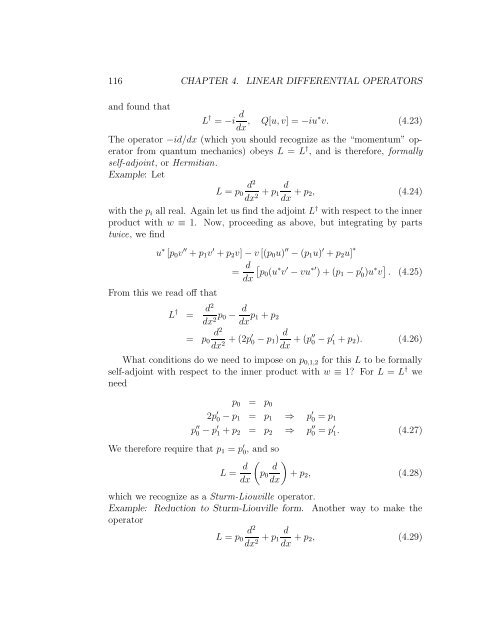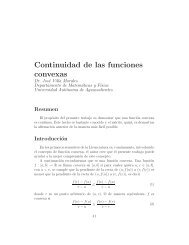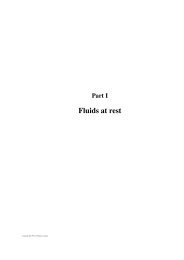Chapter 4 Linear Differential Operators
Chapter 4 Linear Differential Operators
Chapter 4 Linear Differential Operators
Create successful ePaper yourself
Turn your PDF publications into a flip-book with our unique Google optimized e-Paper software.
116 CHAPTER 4. LINEAR DIFFERENTIAL OPERATORS<br />
and found that<br />
L † = −i d<br />
dx , Q[u, v] = −iu∗v. (4.23)<br />
The operator −id/dx (which you should recognize as the “momentum” operator<br />
from quantum mechanics) obeys L = L † , and is therefore, formally<br />
self-adjoint, or Hermitian.<br />
Example: Let<br />
d<br />
L = p0<br />
2 d<br />
+ p1<br />
dx2 dx + p2, (4.24)<br />
with the pi all real. Again let us find the adjoint L † with respect to the inner<br />
product with w ≡ 1. Now, proceeding as above, but integrating by parts<br />
twice, we find<br />
u ∗ [p0v ′′ + p1v ′ + p2v] − v [(p0u) ′′ − (p1u) ′ + p2u] ∗<br />
= d <br />
p0(u<br />
dx<br />
∗ v ′ − vu ∗′ ) + (p1 − p ′ 0 )u∗v . (4.25)<br />
From this we read off that<br />
L † = d2<br />
dx2 p0 − d<br />
dx p1 + p2<br />
= p0<br />
d 2<br />
dx 2 + (2p′ 0<br />
d<br />
− p1) + (p′′ 0<br />
dx − p′ 1 + p2). (4.26)<br />
What conditions do we need to impose on p0,1,2 for this L to be formally<br />
self-adjoint with respect to the inner product with w ≡ 1? For L = L † we<br />
need<br />
We therefore require that p1 = p ′ 0<br />
p0 = p0<br />
2p ′ 0 − p1 = p1 ⇒ p ′ 0 = p1<br />
p ′′<br />
0 − p ′ 1 + p2 = p2 ⇒ p ′′<br />
0 = p ′ 1. (4.27)<br />
, and so<br />
L = d<br />
<br />
d<br />
p0 + p2, (4.28)<br />
dx dx<br />
which we recognize as a Sturm-Liouville operator.<br />
Example: Reduction to Sturm-Liouville form. Another way to make the<br />
operator<br />
d<br />
L = p0<br />
2 d<br />
+ p1<br />
dx2 dx + p2, (4.29)




